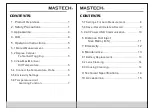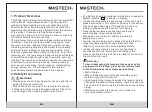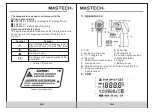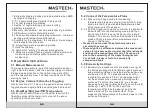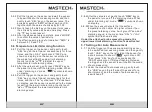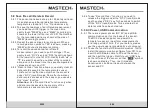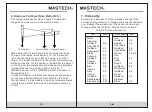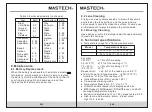
12
11
The temperature sensor has an angle of view and a
range of view, as shown in the picture below.
6. Distance To Object Size Ratio (D:S )
Make sure that the test object fully occupies the range
of view of the temperature sensor, i.e., let the sensor
“see” the test object only, without “seeing” any other
object. The larger the object is, the longer the measuring
distance must be; On the contrary, the smaller the object
is, the shorter the distance must be. Measuring distance
to size of the test object ratio (D:S ratio) is 30:1
(MS6540 series) or 50:1 (MS6550 series), as shown in
the graph below:
In order to make sure that the temperature sensor does
not receive infrared radiation from objects other than
the test object, it is advisable to carry out measurements
in a distance shorter than what is calculated according
to D:S.
7. Emissivity
Emissivity is a measure of the radiation energy of the
corresponding material. This temperature sensor allows
you to adjust the emissivity of the sensor according to
the type of the test surface. Please refer to Table 2.
Table 2. Surface Emissivity
Test
Metal
Aluminum
Oxidized
Alloy A3003
Oxidized
Roughened
Brass
Polished
Oxidized
Copper
Oxidized
EMS
0.2
-
0.3
0.1
-
0.3
0.5
0.4
-
Test Surface
Iron
Oxidized
Rusted
Iron (Cast)
Oxidized
Unoxidized
Molten
Iron
Dull
Lead
Rough
EMS
0.5
-
0.5
-
0.6
-
0.2
0.2-0.3
0.9
0.4
Oxidized
Molybdenu
Oxidized
Nickel
Oxidized
Platinum
Black
Elec.
Haynes
Alloy
Inconel
Oxidized
Sandblasted
Electropolish
0.6
0.3
-
0.7
-
0.3
-
0.95
0.2
-
0.2
-
0.2
-
0.9
Test Object Lens Cylinder Optical Sensor


